News
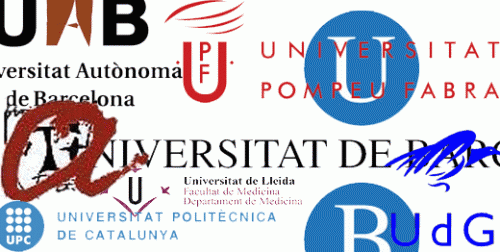
24/09/2015
Rankings: UAB, UB and UPF Confirm the Quality of the Universities of Barcelona
Rankings: UAB, UB and UPF Confirm the Quality of the Universities of Barcelona
The good results obtained recently by the Universitat Autònoma de Barcelona (UAB), strategic partner of the Barcelona Synchrotron Park, by the University of Barcelona (UB) and by the Pompeu Fabra University (UPF) in two of the most famous rankings remind us how good is the quality of the academic system in Barcelona.
In the Academic Ranking of World Universities (ARWU), better known as the Shanghai ranking, the latest edition of which was recently announced, the UB is the best placed Spanish university: in the 151-200 segment. The UAB appears in the 201-300 segment along with the UPF, the Universidad Autónoma de Madrid (UAM) and the Complutense University of Madrid (UC) from Madrid.
The twelfth edition of the QS World Rankings places the UAB in 190th position among the over 800 universities examined worldwide, and in third position among Spanish universities, behind the UB (166), the UAM (186) and ahead of the UPF (295).
The Massachusetts Institute of Technology, Harvard University and Stanford University, all of them from the USA lead these rankings. In Europe, the University of Cambridge (United Kingdom) is the top one.
Image: www.institutbonanova.cat
In the Academic Ranking of World Universities (ARWU), better known as the Shanghai ranking, the latest edition of which was recently announced, the UB is the best placed Spanish university: in the 151-200 segment. The UAB appears in the 201-300 segment along with the UPF, the Universidad Autónoma de Madrid (UAM) and the Complutense University of Madrid (UC) from Madrid.
The twelfth edition of the QS World Rankings places the UAB in 190th position among the over 800 universities examined worldwide, and in third position among Spanish universities, behind the UB (166), the UAM (186) and ahead of the UPF (295).
The Massachusetts Institute of Technology, Harvard University and Stanford University, all of them from the USA lead these rankings. In Europe, the University of Cambridge (United Kingdom) is the top one.
Image: www.institutbonanova.cat
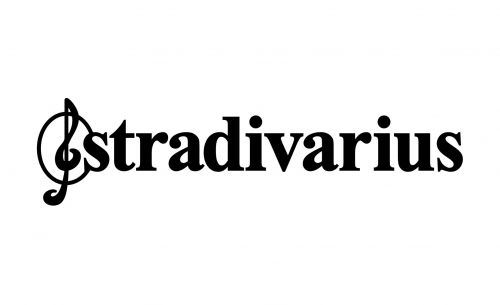
18/09/2015
With Stradivarius, Design and Fashion Arrive in the Barcelona Synchrotron Park
With Stradivarius, Design and Fashion Arrive in the Barcelona Synchrotron Park
The new Stradivarius design and development center will settle in the Barcelona Synchrotron Park.
With 922 boutiques in 61 different countries worldwide and annual sales revenue of 1.1 billion Euros, the third most important brand (after Zara and Bershka) of the global fashion giant Inditex, signed last week the purchase of a 19,000 square meters plot to erect a four floor building. By the end of 2016, some 200 people will come, including a team in the process of formation to design the new men’s clothing line.
Stradivarius has chosen the Barcelona Synchrotron Park as an ideal location for its designers to find the inspiration to imagine the famous firm’s collections. It is great news for the park. Welcome!
With 922 boutiques in 61 different countries worldwide and annual sales revenue of 1.1 billion Euros, the third most important brand (after Zara and Bershka) of the global fashion giant Inditex, signed last week the purchase of a 19,000 square meters plot to erect a four floor building. By the end of 2016, some 200 people will come, including a team in the process of formation to design the new men’s clothing line.
Stradivarius has chosen the Barcelona Synchrotron Park as an ideal location for its designers to find the inspiration to imagine the famous firm’s collections. It is great news for the park. Welcome!
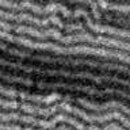
09/09/2015
The ALBA Synchrotron in the Development of Future Computers
The ALBA Synchrotron in the Development of Future Computers
A team of researchers from the Spanish National Research Council (CSIC) and the ALBA Synchrotron has developed a new method to produce and characterize cobalt ferrite nanostructures with higher quality than ever before. The study, published last month in Advanced Materials, has implications in spintronics, a technology for developing advanced computing systems.
Growth and initial characterization of the islands were performed at the low-energy electron and photoemission electron microscope of the CIRCE beamline at the ALBA Synchrotron. Cobalt and iron atoms were deposited on a substrate at high temperature, while being exposed to oxygen.
Beside, earlier this month, an article about the use of ALBA light in the study of magnetization of buried-covered films was published in Nature Communications: The technology of magnetic storage of digital data has made enormous progress in the last two decades thanks to the scientific advances in nanomagnetism, resulting in the creation of smaller devices with larger capacities and better performances.
A group of scientists from the ALBA Synchrotron, the University of Oviedo, the University of Porto and the National Microelectronics Centre (CNM-CSIC) has carried out a research that sheds light on the magnetic domains in ultrathin magnetic films. Using ALBA's X-ray transmission microscope, the researchers have been able to precisely measure the angles of magnetization of the magnetic domains and to determine how they change when they are buried – covered by other material film.
Image: image of the magnetic domains, Blanco-Roldán et al., see Reference #2
References:
Growth and initial characterization of the islands were performed at the low-energy electron and photoemission electron microscope of the CIRCE beamline at the ALBA Synchrotron. Cobalt and iron atoms were deposited on a substrate at high temperature, while being exposed to oxygen.
Beside, earlier this month, an article about the use of ALBA light in the study of magnetization of buried-covered films was published in Nature Communications: The technology of magnetic storage of digital data has made enormous progress in the last two decades thanks to the scientific advances in nanomagnetism, resulting in the creation of smaller devices with larger capacities and better performances.
A group of scientists from the ALBA Synchrotron, the University of Oviedo, the University of Porto and the National Microelectronics Centre (CNM-CSIC) has carried out a research that sheds light on the magnetic domains in ultrathin magnetic films. Using ALBA's X-ray transmission microscope, the researchers have been able to precisely measure the angles of magnetization of the magnetic domains and to determine how they change when they are buried – covered by other material film.
Image: image of the magnetic domains, Blanco-Roldán et al., see Reference #2
References:
- L. Martín-García, A. Quesada, C. Munuera, J.F. Fernández, M. García-Hernández, M. Foerster, L. Aballe, J. de la Figuera. Atomically flat ultrathin cobalt ferrite islands. Advanced Materials. DOI: 10.1002/adma.201502799
- "Nanoscale Imaging of Buried Topological Defects with Quantitative X-Ray Magnetic Microscopy" C. Blanco-Roldán, C. Quirós, A. Sorrentino, A. Hierro-Rodríguez, L.M. Álvarez-Prado, R. Valcárcel, M. Duch, N. Torras, J. Esteve, J.I.Martín, M. Vélez, J.M. Alameda, E. Pereiro, S. Ferrer Nature Communications DOI: 10.1038/NCOMMS9196
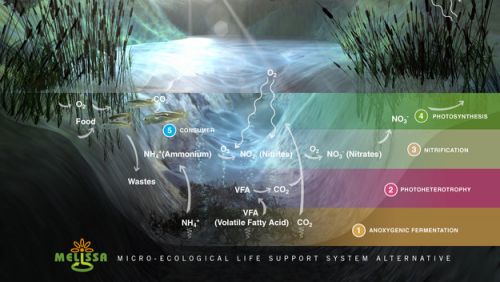
03/09/2015
Travelling to Mars Is In Progress Near the Barcelona Synchrotron Park
Travelling to Mars Is In Progress Near the Barcelona Synchrotron Park
Recently, an original experiment carried out on the International Space Station was exposed by the media: astronauts tested in August the first vegetable ever cultivated into space (a salad) as part of a NASA experiment to help prolong manned missions.
Some hundred meters horizontally far from the Barcelona Synchrotron Park (BSP) - and not 400 km above it -, the MELiSSA pilot plant from the European Space Agency (ESA), which is located in the engineering school of the Universitat Autònoma de Barcelona (UAB), the BSP strategic partner, works on a similar but much more ambitious project.
During a round-trip voyage to Mars, a six-person crew would need about 30 tons of food, oxygen and water for the 1,000 days mission. This huge quantity would be drastically reduced if a closed loop system would recycle the CO2 exhaled and the waste produced by the crew in order to produce in return oxygen, water and food, etc.: this is the MELiSSA project.
This project started 20 years ago and is founded up to 60% by the ESA (5 million Euros per year). It involves 100 researchers from 30 organizations and 15 European countries. In this puzzle the UAB pilot plant, which was inaugurated in 2009, plays a central role and will soon take a new important step: living beings will be introduced in the plant in order to test some parts of the artificial ecosystem. Rats, not astronauts, at the moment.
http://www.esa.int/Our_Activities/Space_Engineering_Technology/Melissa
Some hundred meters horizontally far from the Barcelona Synchrotron Park (BSP) - and not 400 km above it -, the MELiSSA pilot plant from the European Space Agency (ESA), which is located in the engineering school of the Universitat Autònoma de Barcelona (UAB), the BSP strategic partner, works on a similar but much more ambitious project.
During a round-trip voyage to Mars, a six-person crew would need about 30 tons of food, oxygen and water for the 1,000 days mission. This huge quantity would be drastically reduced if a closed loop system would recycle the CO2 exhaled and the waste produced by the crew in order to produce in return oxygen, water and food, etc.: this is the MELiSSA project.
This project started 20 years ago and is founded up to 60% by the ESA (5 million Euros per year). It involves 100 researchers from 30 organizations and 15 European countries. In this puzzle the UAB pilot plant, which was inaugurated in 2009, plays a central role and will soon take a new important step: living beings will be introduced in the plant in order to test some parts of the artificial ecosystem. Rats, not astronauts, at the moment.
http://www.esa.int/Our_Activities/Space_Engineering_Technology/Melissa
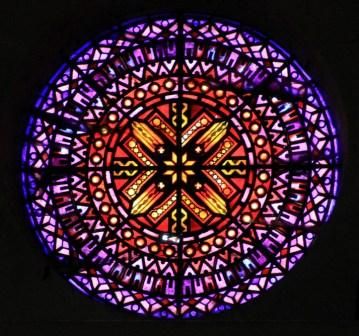
09/08/2015
A Synchrotron Is Also Good at Paleontology, Art or History
A Synchrotron Is Also Good at Paleontology, Art or History
A recent scientific paper reminds us that a synchrotron can be a decisive tool in paleontology: synchrotron X‐ray scanning has solved the mystery surrounding the 125 million‐year‐old tiny fossil eggs discovered in Thailand in 2003. A first analysis of the eggshells concluded that they belonged to a small theropod dinosaur, or possibly a primitive bird. Recent experiments carried out at the ESRF, the European Synchrotron, Grenoble, France, and published on July 15 in PLOS ONE by an international team of scientists have swept aside this conclusion and found evidence to solve this palaeontological mystery. Synchrotron imaging of the embryonic skeletons preserved in these eggs revealed that they are in fact anguimorph lizards. They are the oldest lizard embryos ever discovered in fossil eggs.
For its part, the ALBA synchrotron located in the Barcelona Synchrotron Park, gives an example of how a synchrotron can be used in the field of art and history. A group of researchers from Universitat Politècnica de Catalunya and from Universitat de Vic have measured in ALBA different decorations in glass and glazed ceramics from the historical periods of early Islamic glazes and late Renaissance. This group focused it research on the micro-and nano-crystalline compounds responsible for the colors and decorations in historic glass and glazed ceramics. The nature of these decorations depends on the procedures followed to obtain them. Two main sets of historic materials were studied: decorated stained glass fragments from various periods and cathedrals in Spain (14th to 16th AD) to discover materials and methods used and early opaque Islamic glazes from Syria and Egypt (7th and 8th AD) to identify the connection with opaque glass technology.
Remember: researchers from all over the world interested in using ALBA during the first half of 2016 can send their proposal by September 7: the scientific comity will select the best scientific projects allowed to use the synchrotron during this period of time.
For its part, the ALBA synchrotron located in the Barcelona Synchrotron Park, gives an example of how a synchrotron can be used in the field of art and history. A group of researchers from Universitat Politècnica de Catalunya and from Universitat de Vic have measured in ALBA different decorations in glass and glazed ceramics from the historical periods of early Islamic glazes and late Renaissance. This group focused it research on the micro-and nano-crystalline compounds responsible for the colors and decorations in historic glass and glazed ceramics. The nature of these decorations depends on the procedures followed to obtain them. Two main sets of historic materials were studied: decorated stained glass fragments from various periods and cathedrals in Spain (14th to 16th AD) to discover materials and methods used and early opaque Islamic glazes from Syria and Egypt (7th and 8th AD) to identify the connection with opaque glass technology.
Remember: researchers from all over the world interested in using ALBA during the first half of 2016 can send their proposal by September 7: the scientific comity will select the best scientific projects allowed to use the synchrotron during this period of time.
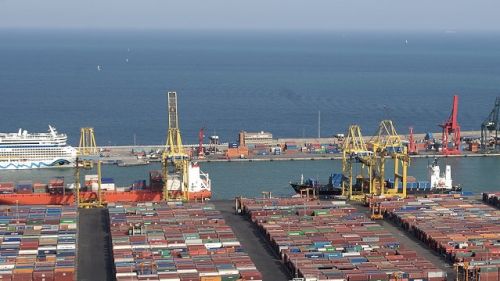
29/07/2015
Barcelona, an Attractive City for Foreign Direct Investments
Barcelona, an Attractive City for Foreign Direct Investments
Barcelona is the eighth European city in terms of attractiveness for company investment, according to the European Attractiveness Survey 2015 elaborated Ernst & Young. The Top 3 are London, Paris and Berlin.
This ranking was performed based on 808 responses from investors (52% European, 30% from the USA and 18% from Asia and the rest of the world). The study defines attractiveness as a combination of a city’s image, the confidence it inspires in investors and the perception of competitiveness that foreign investors have of each area.
This document also gives the Top 10 European urban areas projects based on foreign direct investments. In this ranking based on compiled figures obtained for the Ernst & Young 's Global Investment Monitor 2015, Catalonia (Barcelona) ranked 4th in 2014 with 108 projects, after Greater London, Greater Paris and Darmstadt (Frankfurt).
Image: Port of Barcelona (www.catalonia.com)
This ranking was performed based on 808 responses from investors (52% European, 30% from the USA and 18% from Asia and the rest of the world). The study defines attractiveness as a combination of a city’s image, the confidence it inspires in investors and the perception of competitiveness that foreign investors have of each area.
This document also gives the Top 10 European urban areas projects based on foreign direct investments. In this ranking based on compiled figures obtained for the Ernst & Young 's Global Investment Monitor 2015, Catalonia (Barcelona) ranked 4th in 2014 with 108 projects, after Greater London, Greater Paris and Darmstadt (Frankfurt).
Image: Port of Barcelona (www.catalonia.com)









